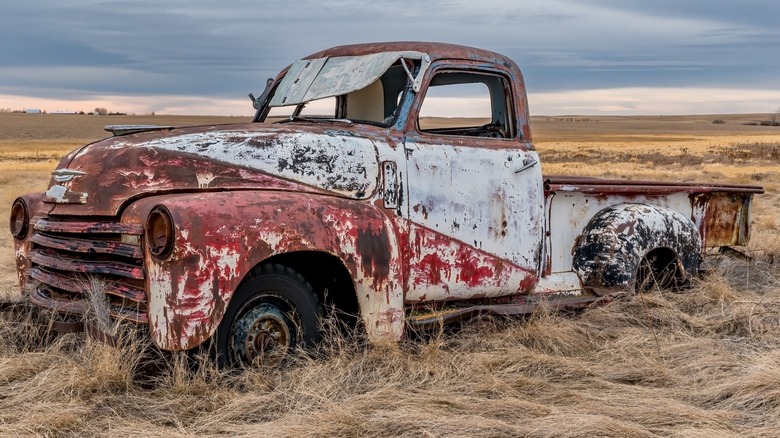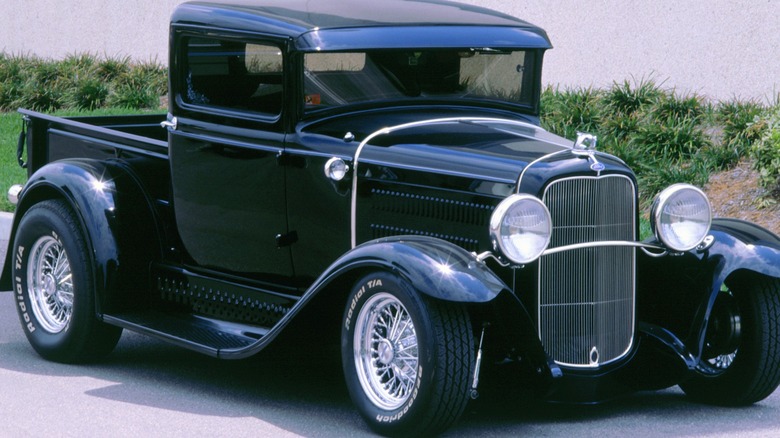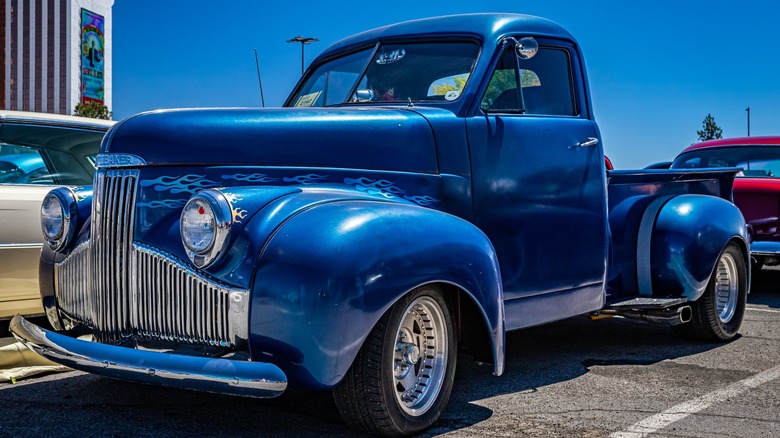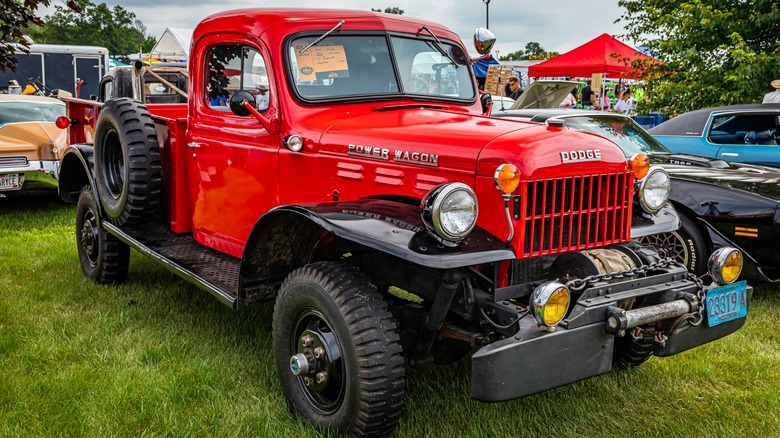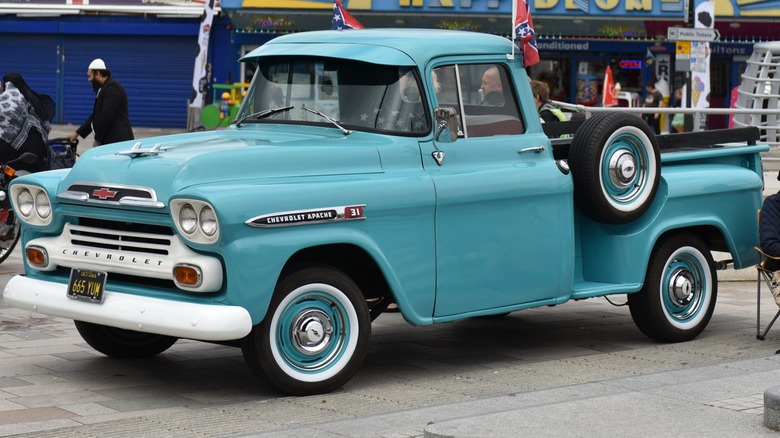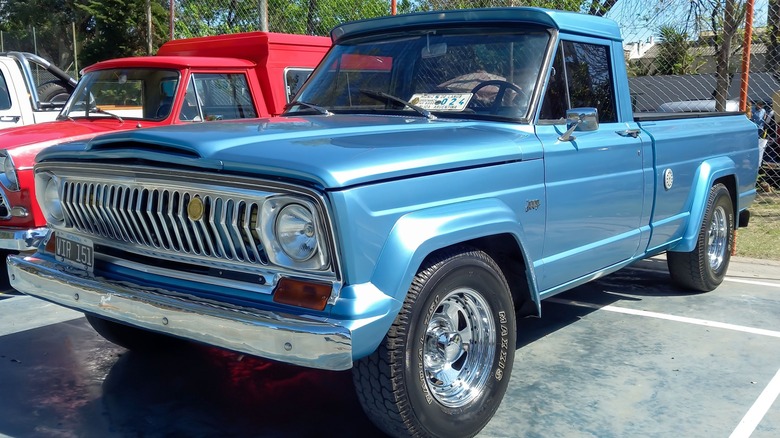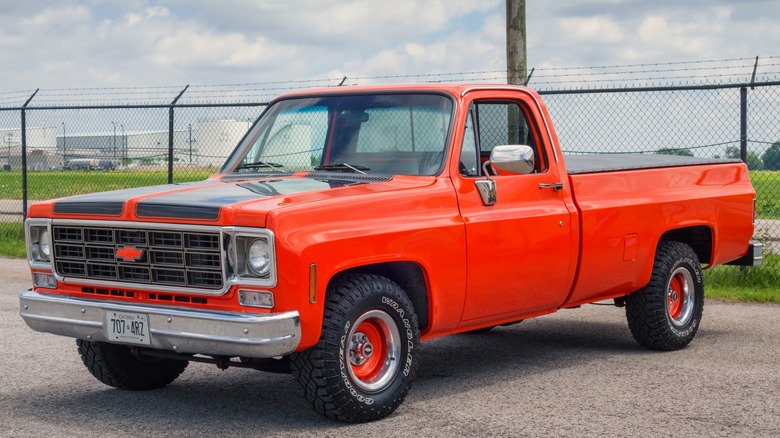6 Classic Pickup Trucks That Make Good Project Vehicles
Restoring older cars is a pastime enjoyed on evenings and weekends in home garages nationwide. There's something inherently satisfying about bringing an old machine from a state of neglect to return to its former glory. While practicality seldom makes the list of considerations when choosing a project vehicle, a classic pickup truck's functional side could tip the scales slightly.
How is a classic pickup truck practical? It's no secret that contemporary pickup trucks are useful anytime you need to haul garden supplies or help your friends move. However, their large size and poor fuel economy make them less than ideal as a daily driver. Enter the classic pickup truck project.
Project vehicles serve a specific purpose, generally reserved for cruising on sunny spring days, warm summer evenings, and tree-covered landscapes in the fall. While classic pickup trucks can perform those duties admirably, they can haul supplies and moving boxes better than a car. Look at these classic pickup trucks and see if one could be your next (or first) project vehicle.
Ford Model B
Following Ford's highly successful Model T and Model A automobiles was no easy task. However, the 1932 Ford Model B possessed an updated exterior and offered a variety of car body styles and a pickup truck. The Model B used a familiar 201-cubic-inch inline-four-cylinder engine. However, its higher compression and redesigned intake manifold produced 50 horsepower, 10 more than the Model A engine.
While prices continue to rise, Hemmings lists some nicely restored Model B pickup trucks for sale, ranging between $25,000 and $50,000. The cost of a project Model B pickup depends on numerous factors, but the most significant factors are the vehicle's completeness and condition. While it may be possible to find a well-preserved 1930s Ford Model B pickup in a barn underneath a tarp with all of its original parts for a reasonable price, it'll be on par with winning the lottery. The good news is that thanks to the Model B's popularity, multiple sources for reproduction parts exist.
Studebaker M-Series
Studebaker introduced the M-Series pickup truck line in 1941, with the United States on the cusp of entering WWII two years after the Great Depression of the 1930s. The company produced M-Series trucks to support the war effort, ending production with the 1948 model year. Former Studebaker trucks competed in the heavy-duty delivery truck niche. Rebounding from a decade of slow sales, Studebaker saw an opportunity in the light- to medium-duty truck segment in the coming years. Before the war, Studebaker produced three models of M-Series trucks: M5, M15, and the oddly named M16. Post-war, Studebaker added the M17 to its catalog.
The Studebaker M5 half-ton pickup truck and one-ton-rated M15 trucks used an 80-horsepower six-cylinder with 170 cubic-inch displacement. The M16 1-1/2-ton and two-ton M17 trucks got larger 226-cubic-inch six-cylinders with 94 horsepower. Although the trucks featured a fresh design, neither engine was new, as Studebaker had used them in their cars for years.
Over the last four-and-a-half years, the self-proclaimed "data geeks and car enthusiasts" at Classic have recorded multiple M5 and M16 Studebaker sales between $5,500 and $20,000. The most recent recorded M-Series sale went for $35,200; the highest bid of $41,800 went to a 1946 M5 at Barrett-Jackson last January. Classic calculates that, per their data, a Studebaker M-Series sells for $21,681 on average.
Dodge Power Wagon
The original Dodge Power Wagon, produced from late 1945 to 1950, was based on the early 1940s WC T-214 trucks developed for military use. The first Power Wagons featured a 230-cubic-inch six-cylinder engine with a 6.7:1 compression ratio, delivering 94 horsepower and 185 lb-ft of torque. With axle ratios as low as 5.83:1, 34.6-inch diameter 8-ply tires, an optional 7,500-pound PTO winch, and a dual-range transfer case, the Dodge Power Wagon was designed for rugged work or play.
The Power Wagon's reputation and styling make it popular among pickup truck restoration enthusiasts. Bring a Trailer says it brokered the sale of a highly customized four-door, Cummins-diesel-powered, 1949 Dodge Power Wagon in December of 2021, bringing $405,000. Current listings at Hemmings include Power Wagons ranging from a restored 1947 priced at $120,000 to a 1950 frame-only listing for $2,950. A better option for a project truck is the nearly complete 1947 utility-bed Power Wagon listed for $12,950. You'll need to source an engine, radiator, and interior pieces, but the rest of the truck is reportedly complete.
Chevrolet Apache
Late 1950s Chevrolet Apache light-duty pickup trucks are another popular vehicle for collectors. Chevrolet redesigned its pickup truck lineup for 1958 and began using a new naming scheme. The redesign included increasing the headlight count from two to four, moving the front parking lights into the grille, and adding factory air conditioning. Chevrolet's new naming convention included the Apache moniker for its light-duty pickup lineup, Viking for medium-duty trucks, and Spartan for the heavy-duty models.
The 1958 Chevy Apache 1/2-ton pickup featured a choice of powertrains and drive-lines. Two-wheel- and four-wheel-drive Apache models used Chevrolet's 235.5-cubic-inch Thrustmaster six-cylinder engine with 145 horsepower and 215 lb-ft of torque. The 283-cubic-inch Trademaster V8 with 160 horsepower and 270 lb-ft of torque was available as an upgrade for two-wheel-drive Apaches.
Autotrader Classics shows 1958-59 Apache project trucks for under $10,000 and several beautifully restored examples in the $60,000 range. The median price for these listings hovers around $35,000. At the upper end, sale prices for unique or well-preserved specimens occasionally approach $200,000.
Jeep J-Series
Jeep J-Series pickup trucks replaced the original Jeep Gladiator nameplate in 1971 and enjoyed a 17-year production run before being phased out in 1987. Jeep says the new-for-1971 J-10 and longer-wheel-based J-20 featured upgrades to the frames, wheels, and front brakes compared to the outgoing Gladiator. However, like its predecessor, the J-Series trucks used the "same body design as the Jeep Wagoneer and Cherokee" from the back of the cab to the front bumper.
While any J-10 or J-20 pickup truck makes a great project sure to turn heads at local car shows or cruise-ins, the rare Honcho option is highly prized. The Honcho featured V8 power from its 360-cubic-inch powerplant, producing 195 horsepower and 295 lb-ft of torque. Jeep's 4.0-liter inline-six-cylinder powered other J-Series pickups, and although less powerful, its reliability made it hard to beat.
Classic Cars has seven Jeep J-10 listings, the most desirable of which is a "like brand new" 1983 Honcho priced at $32,495. While this Honcho's condition appears excellent, previous owners replaced the original engine with a 289-cubic-inch V8 from Ford.
GM C/K square body
General Motors produced square-body C and K model pickup trucks under the Chevrolet and GMC banners from 1973 to 1987. The sheer volume of trucks makes the two-wheel-drive C or four-wheel-drive K models excellent choices for a restoration project. The Square Body underwent several changes over the years, updating everything from grille designs and available engines to naming conventions with the introduction of the 1500, 2500, and 3500 badges.
In addition to the high number of well-preserved donor trucks due to their relatively low age, the square body's popularity ensures a vast network of reproduction parts. With easily sourced project vehicles and replacement parts, square-body GMs represent some of the best options for restoring a classic pickup truck. If you're looking for something more turnkey, there's also an entire industry of classic truck brokers specialized in finding and restoring old trucks. With hundreds of listings on Autotrader Classic, square body truck prices range from a few thousand dollars to fully restored models breaking $100,000.
